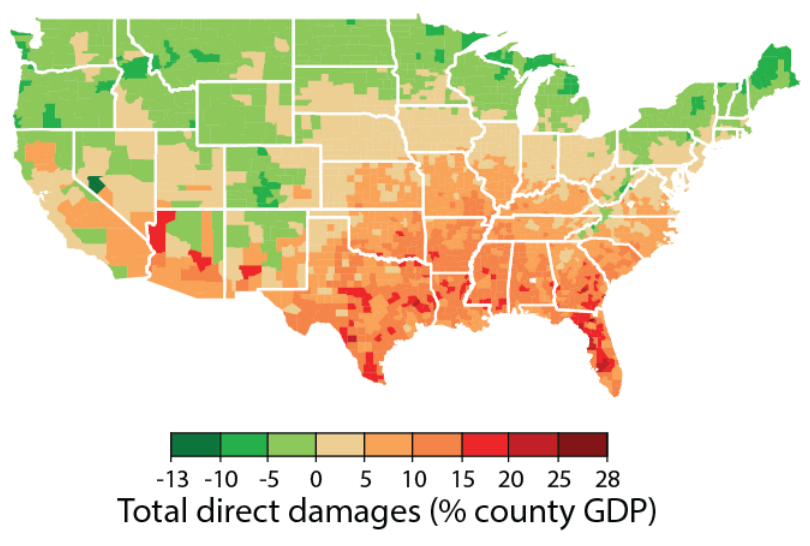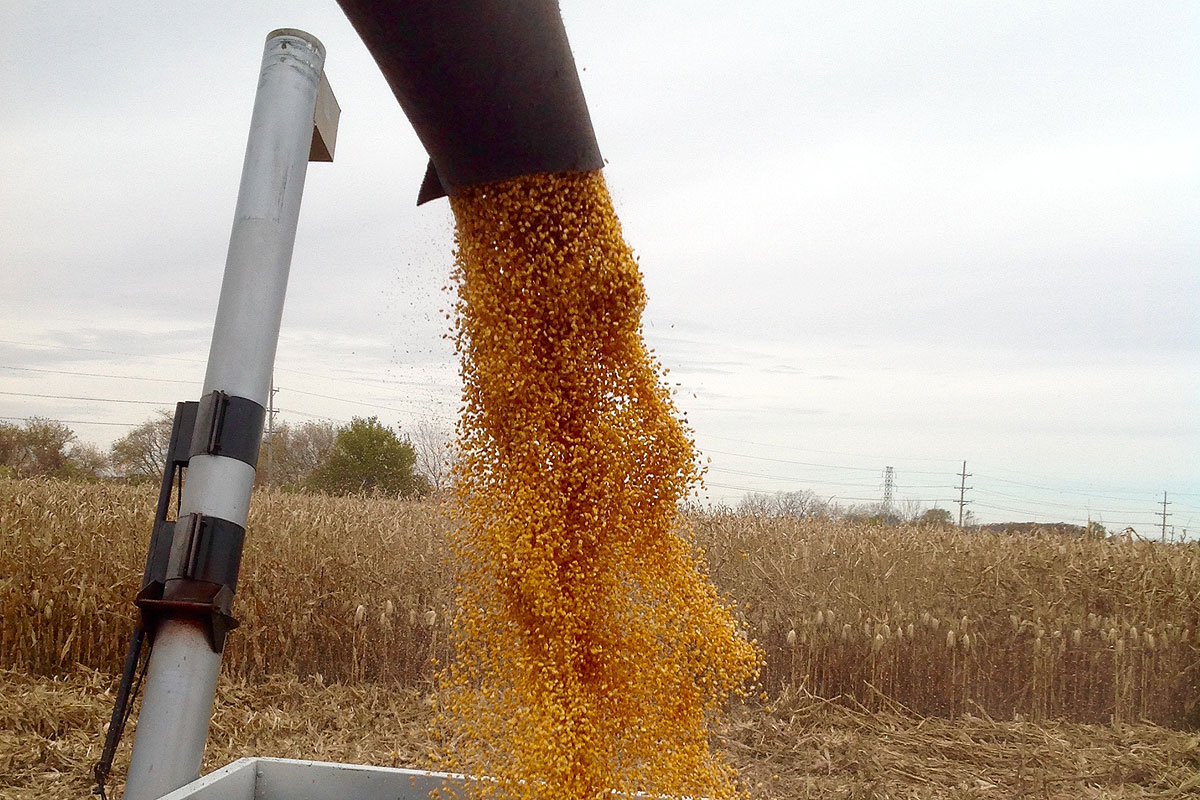Not long ago I spoke with a climate scientist, Robert Kopp, about the potential effects of climate change on Illinois and the central Midwest. It's worrisome—despite our famously brutal winters and distance from coasts affected by sea-level rise, the central Midwest is more vulnerable to changes than its popular reputation suggests.
Kopp is back with a new study in Science with a raft of co-authors, led by Berkeley's Solomon Hsiang and including University of Chicago economist Amir Jina. There's an economist on the team for good reason: it's titled "Estimating economic damage from climate change in the United States."
And the outlook for us, while not quite as bad as for the South, isn't great.

There are a couple reasons for this. One is that Illinois is still very agriculture-dependent, and particularly dependent on corn. Here's what happens to corn when things get warm.

30 Celsius is 86 degrees Farenheit. Up to that, corn actually does fine; but that's the breaking point.
Scientists believe that the spike in average temperatures that is widely predicted by climate models for North America could hurt its agriculture sector. As the number of days that are hotter than 30 degrees Celsius (86 degrees Fahrenheit) increases, they now predict, estimated future harvests of wheat, soybeans and corn could drop by 22 to 49 percent, depending on the variety of the crop.
[snip]
According to their estimates, corn and soybean plants can lose 5 percent of their harvest for every single day that is recorded above 30 C. Such crop losses could have huge repercussions for domestic food security and — given that the United States is one of the largest crop exporters in the world — affect prices in the international market.
Illinois's combination of being more vulnerable to hotter weather compared to its neighbors, and its corn- and soy-heavy agricultural industry would mean substantial problems in this scenario by 2080-2099. Keep in mind that these projections are for RCP 8.5—a rather pessimistic model of increased greenhouse-gas emissions through the end of the century that assumes something like the worst about how much of different energy sources is still out there and how humans will choose to use it.

Illinois would also be one of the more vulnerable states in terms of increased energy use.

"Southern and Midwestern populations suffer the largest losses," the authors conclude, "while Northern and Western populations have smaller or even negative damages, the latter amounting to net gains from projected climate changes."
Again, this is the current scenario if nothing is done. A lot of scientists believe that's unlikely because of current political and economic trends. And that's just in terms of emissions; adapting farming techniques and moving towards more heat-resistant crops are possibilities, although there's more pessimism about the current state of that science. But if all the oil gets used up, perhaps the Midwest will have to start looking at water as the new oil.



